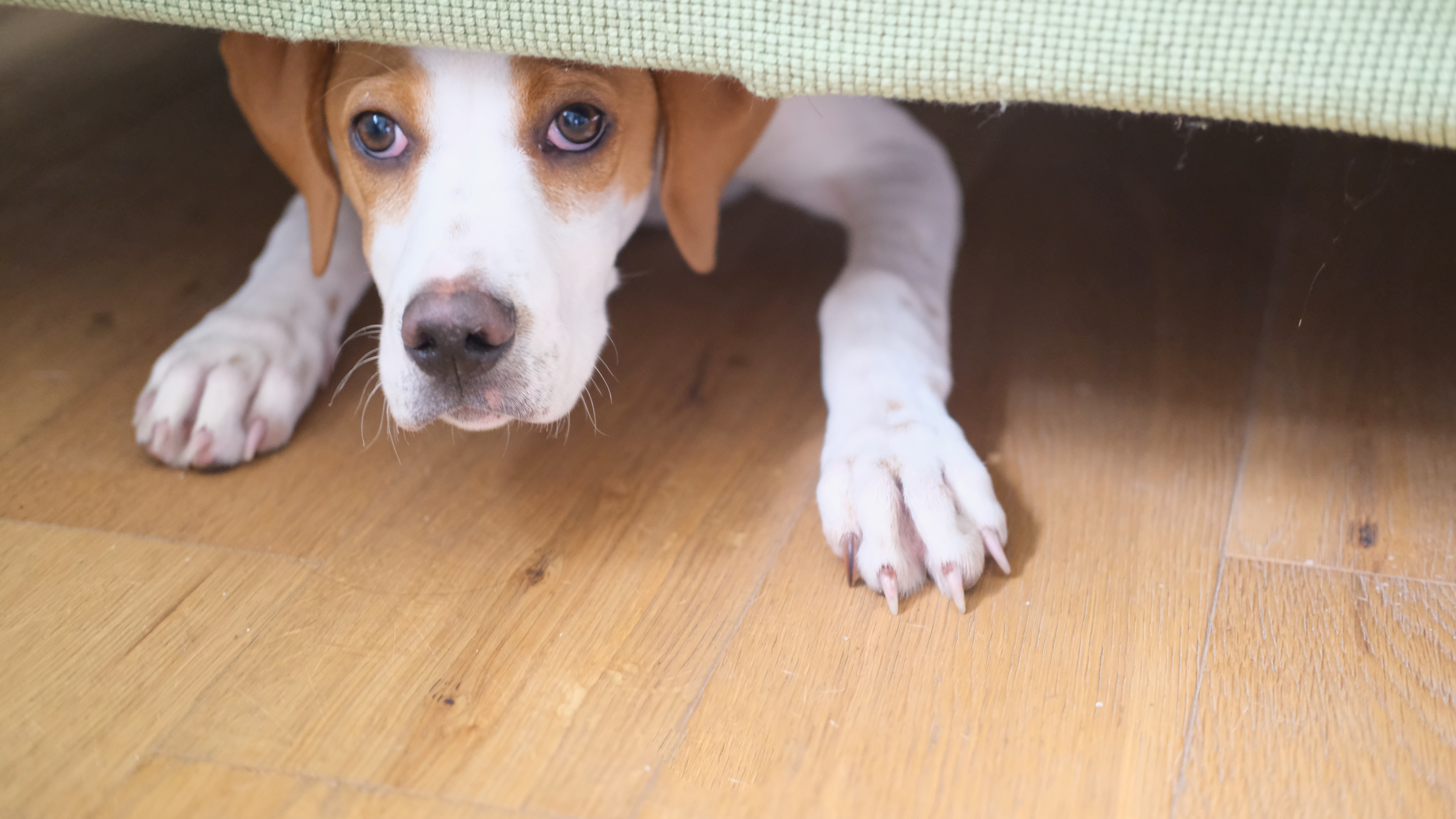
At your wits end trying to figure out ways to help your fearful dog feel less afraid? We hear you. If you have a pup that barks every time the doorbell rings or lunges at other animals or people in the park, then learning how to calm a reactive dog is likely high on your priority list.
"Life with a fearful dog can be tricky to navigate," explains expert trainer Sean O'Shea. "Sadly, many people think the cure to a fearful dog is forcing them to overcome their fears. This usually backfires and leads to increased fearfulness and sometimes aggression."
O'Shea says that he hears lots of other bad advice when it comes to dealing with fearful dogs, namely that their nervousness and anxiety should be managed through punishment. However, he says that dogs who have a high level of fear require the exact opposite and instead need lots of love and patience.
To help you work with your fearful dog to get the best out of them, O'Shea has shared a helpful post to Instagram, where he reveals his top six tips for assisting your pup in growing their confidence and remaining calm in triggering situations. You can check it out below or read on for a summary of his advice.
1. They don't need socialization: "The time for socialization has passed," O'Shea explains. "Instead, they need training and support to help them gain confidence and overcome their fears."
2. They need choices: "A dog afraid of new people should not be forced to receive touch. A dog afraid of dogs should not be forced to interact with another dog. Give them the option to say no, to walk away, to leave a stressful situation."
3. Flooding doesn't help: "Flooding is forcing your dog to face their fears," explains O'Shea. "This has been found to increase fear, not reduce it. It might look like taking a dog who is terrified of other dogs to a dog park or taking your noise-phobic dog to a fireworks display."
4. Be their advocate: "Is your dog afraid of new people? Learn to be confident telling people no, they cannot pet your dog. Being their advocate means not putting them in situations they cannot handle."
5. Never, ever punish: "A scared dog does not need to be yelled at or yanked around. They don't need shock collars, choke chains, or prong collars. They need patience and support," O'Shea stresses.
6. Decompression time: "Give them time to relax and give them time to play. Both of these things help reduce stress and increase optimism and confidence."
For more great canine training tips, be sure to check out our guides to how to stop a dog from jumping up and how to stop a dog pulling on a leash.







